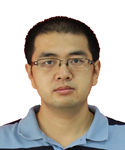| Biography | |
|---|---|
 Prof. Jian Zhou Xi’an Jiaotong University, China |
|
| Title: Optical Responses of Two-Dimensional Materials – Valleytronics and Phase Transition | |
| Abstract:
In order to manipulate and tune the physical properties of a material, usually one has to apply an external field, such as elastic and inelastic strain, electric field, magnetic field, or light illumination. Among these strategies, the optical field is a far field, which does not need mechanical or electrochemical contact or patterning onto material samples. In this talk, I will discuss optical responses of low-dimensional nanoscale materials, mainly focusing on two promising aspects, namely, valleytronics and phase transition. The close connection between the circularly polarized light with valleytronics is initiated by the discovery of two-dimensional transition metal dichalcogenides. Here, I will discuss some progress in our group, such as valley polarized topological feature, valley polarized Nernst effect, and valley polarized plasmonic behaviors, based on the same honeycomb lattice model. I will also discuss our predictions on the modification of Gibbs free energy of two-dimensional materials under linearly polarized light illumination, and consequent phase transition of these materials.
| |
| Biography:
Prof. Jian Zhou received his Bachelor degree in 2008 and Ph.D. in 2013, both from Peking University, China. After employed as postdoc associate at Virginia Commonwealth University and Massachusetts Institute of Technology, he is now working at Xi’an Jiaotong University. His main research focuses on applying first-principles calculations to simulate and predict novel physical behaviors of nanoscale materials, such as ferromagnetism, topological properties, valleytronics, and optical illumination responses. His recent research interest focuses on the opto-mechanical driven phase transition of ferroic materials and applications. He has co-authored over 60 peer reviewed papers, including PNAS, PRL, JACS, Nano Letters, Angewante Chemie, PRB and etc. These papers have received over 3,000 citations (according to google scholar).
| |
